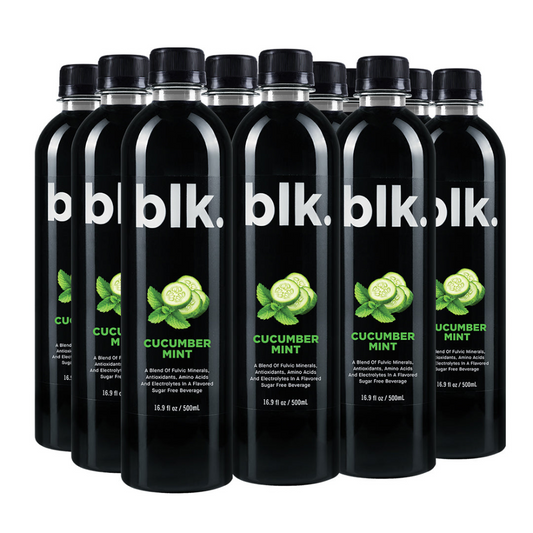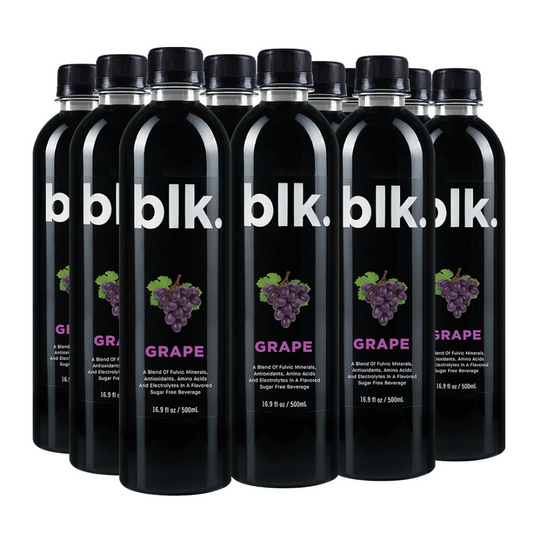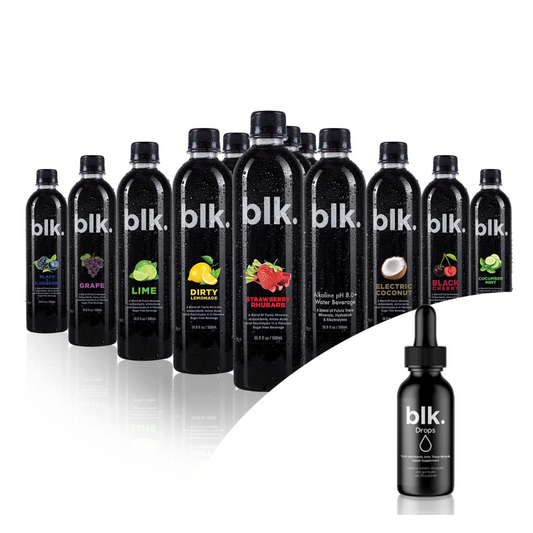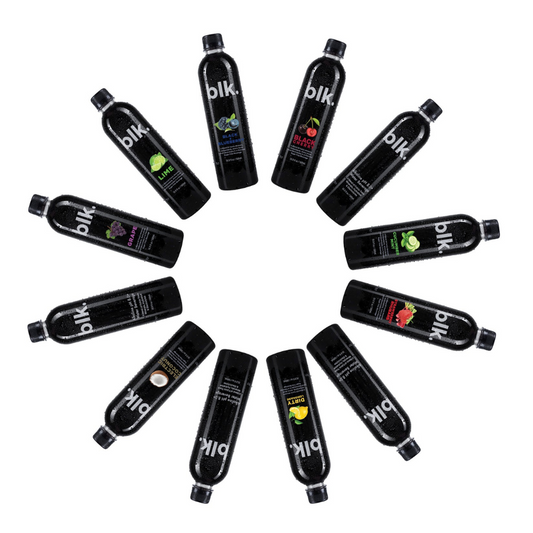
Easy Cardio Workouts for Beginners at Home
This article seeks to answer the following:
- What are cardio workouts?
- What are the benefits of cardio workouts?
- What are some of the cardio workouts for beginners at home?
Cardio workouts are a great way of ushering you into the fitness world as a beginner. But with so many workout routines, finding out where to start may require some research and guidance.
To ease your research process, we've put together the benefits of cardio exercises, simple cardio exercises, tips on avoiding injuries, and debunk some myths around it. Whether you want to start with high-intensity full-body workouts or low-impact exercises, you will hopefully be able to make the right decision for yourself after this read.
What is Cardio?
Cardio, short for cardiovascular exercises, increases your heart rate and respiration while simultaneously involving your large muscle groups. Cardios are excellent options for beginners because they are simple but effective exercises. The groups of people who stand to benefit from cardio include the following:
- Busy working adults looking for a quick and easy way to incorporate cardio into their daily routine
- College students who want to improve their fitness level but have limited access to equipment and facilities.
- Senior citizens who want to improve their cardiovascular health and mobility but need low-impact exercises.
Benefits of Cardio Workouts
Cardio engages your cardiorespiratory systems, which benefits your health in the following ways.
Improved Cardiovascular Health
Cardio increases your blood flow rate and elevates your heartbeat, reducing the risks of heart disease and hypertension.
Weight Loss and Management
We gain weight when we take in more calories than our bodies can expend. During cardio workouts, more calories are burnt, contributing to weight loss. Cardio can also help you gain muscle mass through strength and resistance exercises.
Increased Energy
Energy is produced when carbs and calories are burnt. Cardio burns many calories providing you with energy to carry on with activities throughout the day.
Reduced Stress
Regular exercises trigger the production of endorphins, a hormone that helps reduce stress levels, thus vital in improving mental health.
Creating a Workout Plan
A workout plan for your cardio exercises is essential in helping you stick to your fitness routine. How, then, do you create a workout plan? It's pretty simple. Here are some of the things for you to consider when creating a workout plan.
- Set realistic goals by determining your fitness level.
- Choose cardio exercises you enjoy and can easily incorporate into your lifestyle.
- Determine the frequency of your workout, keeping in mind your schedule and other commitments.
- Determine how long your exercises are going to last. Typically, a beginner’s workout should last 10-15 minutes and gradually increase as your fitness progresses.
Full Body Cardio Workouts
Full-body workouts usually involve compound muscles in the upper body, lower body, and core. They help strengthen your muscles, increase flexibility and stability, and improve endurance. The World Health Organization recommends that cardio exercises take at least 20 minutes, although no upper limit is recommended.
The following are excellent full-body cardio workouts to start as a beginner.
Jumping Jacks
https://vm.tiktok.com/ZMYAtQVF6/
This exercise engages your glutes, quadriceps, hip flexors, and shoulders as secondary muscles. It combines resistance and aerobic exercise, making it suitable for different fitness goals.
Jumping jacks have different variations making them practical for various fitness levels. The basic jumping jack is perfect for beginners, then dial it to advanced modifications like the squat jacks.
High Knees
https://vm.tiktok.com/ZMYAt4DXH/
Cranking high knees workouts work on your lower body, activating your quads, hamstrings, glutes, calves, and hip flexors. It increases heart rate and burns calories, making it excellent for warm-ups and other weight loss exercises.
Mountain Climbers
https://vm.tiktok.com/ZMYAtTkkb/
Mountain climbers engage your shoulder muscles, abdominals, and chest when holding a plank position while moving the legs involves your glutes, hamstrings, quads, hip flexors, and calves.
Stair Climbing
https://vm.tiktok.com/ZMYAtWYFr/
Stair climbing is just as simple as it sounds. It involves climbing stairs, which engage your lower body, including thighs, glutes, quads, and abdominal muscles.
Low-Impact Cardio Workouts
Low-impact workouts are excellent options for starting on fitness and easing back into it after an injury. They are workouts that place less pressure on your joints, making them suitable for people recovering from injuries, who have joint issues, or the elderly.
Low-impact exercises include:
- Walking
- Swimming
- Yoga
- Cycling
- Dancing
The efficiency of these exercises should not be underestimated. They have been proven to be beneficial in the following ways.
Reduces Risks to Injury
Low-impact exercises are gentle on your joints and muscles, unlike weight training which can cause serious harm when using improper form.
Improves Mood
A study commissioned by the University of Nebraska Medical Center found that aerobic exercises like swimming, cycling, and walking help reduce anxiety and depression. This Is because the exercises induce increased circulation in the brain, improving the mood.
Cardio Workouts for Specific Goals
Cardio can be helpful in different fitness goals in the following ways.
Weight Loss
Cardio exercises that burn many calories are ideal for weight loss. The exercises don't need to be high-intensity. Low-impact exercises like running, swimming, jogging, and cycling are helpful in weight loss.
High-Intensity Interval Training (HIITs) is also efficient in weight loss. The intense burst of exercises enables you to complete intense workouts in a shorter time, burning many calories.
The following are excellent cardio exercises for weight loss.
- Rainbow Hop- Rainbow hops are performed by jumping back and forth over an imaginary line laterally while simultaneously swinging your arms in a rainbow motion overhead.
- Forearm Plank Hold- Begin in a push-up position with your forearms on the ground. Hold your body straight from head to heels, engaging your core muscles and keeping your hips level.
- Rainbow Plank- Start in a high plank position, shift your weight to one side, and rotate your body. Return to the starting position, repeating on the other side.
- Glute Bridge March- Lie on your back with your knees bent and feet flat on the floor. Raise hips to form a straight line from shoulders to knees. Lift one foot off the ground and hold for a few seconds before returning it to the ground. Repeat with the other foot.
- Frogger- Start in a push-up position, jump your feet outside your hands, then jump them back to the starting position. Repeat for several reps.
Strength and Endurance
Cardiovascular exercises can improve strength and endurance depending on your fitness levels.
Examples of these exercises include;
- Mountain climbers- Starting in a high plank position, bring one knee toward your chest while extending the other leg. Quickly switch legs, keeping your core engaged and hips level. Alternate legs as quickly as possible, mimicking a running motion.
- Burpees- Begin in a standing position, then drop down to a push-up position, perform a push-up, jump back up to a standing position, and jump up into the air with arms raised overhead. Repeat the process a number of times.
- Bear Crawl- Start on your hands and knees, lift your knees off the ground, and crawl forward with the opposite hand and foot moving together. Keep your back straight and engage your core.
- Squat jumps- To perform squat jumps, start in a squat position with feet shoulder-width apart. Jump up explosively, extending your legs and arms fully. Return to squat and repeat for the desired number of reps.
- Inchworms- Stand with feet hip-width apart, bend at the waist, and walk hands forward into a plank position. Trace back your step and repeat.
Tips for Beginners
Cardio are easy-to-do exercises, making them convenient for beginners. However, like any other exercise, the main challenge is consistency and staying committed and motivated in the cause. The following tips will help you throughout your exercises.
- Set realistic goals- Goals that are easy to achieve will help you want to achieve more.
- Finding a workout buddy- Having a fitness partner will help you motivate each other and accomplish more.
- Do something you enjoy- Cardio workouts involve daily activities like hiking, cycling, and swimming. Pick an activity that you like doing which will have you looking forward to the next session.
- Track your progress- Many fitness apps and wearable technology can help you stay consistent.
Safety Precautions to Avoid Injuries
Warm-up and Cool-down
Warming up increases blood flow in your muscles, preparing them for the workouts. Warming up may help reduce muscle soreness and other injuries related to cardio. Cooling down lowers your blood flow to its normal level. Cool down by reducing the pace of your exercises.
Pick the Right Exercises
Pick exercises that are within your fitness level. If you have not been active in workouts, start slow and gradually increase pace and intensity as your body adjusts.
Use Proper Form
Learning the correct way of performing the exercise is essential to prevent injuries. If you are new to fitness, seek guidance from seasoned fitness enthusiasts or research the exercises before trying them.
Listen to Your Body
Learn to listen to your body and know when to stop to avoid overstraining. Doing too much may cause muscle soreness, preventing you from continuing with regular exercises.
Wear the Right Clothes
You should wear light clothes you feel comfortable and confident in. The clothes should be flexible to allow a full range of motion. Shoes are also part of clothing and should not be too tight or loose.
Rest
Resting is essential because it allows your body time to recover. Continuous exercises without rest may do more harm than good.
Common Myths and Misconceptions about Cardio Exercises
Cardio exercises have numerous benefits and drawbacks, but myths and misconceptions about them should also be disproved to ensure you maximize your cardio workouts. They include the following:
Cardio exercise should be done for at least an hour
Cardio can be an effective workout even for shorter periods. High-Intensity Interval Training (HIIT) is an excellent way of burning calories within a short period of time. HIITs are suitable options for people with busy schedules. The duration of the exercise is not as important as the intensity of the exercises.
Cardio should always be done first
Some people believe cardio should be done before strength and endurance exercises. There is no specific formula for cardio, but it can also be done after training. In fact, since weight training requires more energy, it is better if it is done before cardio.
Cardios plus fasting records better results for weight loss
As much as fasting reduces calorie intake, doing cardio on an empty stomach is not okay. You should eat foods rich in carbohydrates before your workouts to give you energy for the exercises.
The more you sweat, the more effective the exercises
Everybody has different physiological makeup. Sweat is not an indication of the effectiveness of the exercises. Some people easily break a sweat with the simplest of exercises, but that does not mean they do the cardio better than everyone else.
If you do cardio, you can skip leg-day
Running, sprinting, and cycling are excellent cardio that can improve the strength and endurance of your legs, but they should not be a replacement for leg workouts. Certain muscles may not be effectively targeted by cardio.
Conclusion
To sum it up, cardio exercises are the best way to get into fitness for beginners. They are less complicated and do not require fancy and complicated gym equipment. Cardios are also great for your health and well-being because they reduce the risks of developing health complications. Cardio workouts are the best option to take your fitness to the next level.
Frequently Asked Questions
-
Is it safe to do cardio exercise if I have a pre-existing medical condition?
-
What is the best time of day to do cardio exercise?
-
Is it better to do cardio exercises before or after strength training?
-
What is the best way to warm up before a cardio workout?
-
What is the best way to cool down after a cardio workout?
-
Can I do cardio exercise every day?




